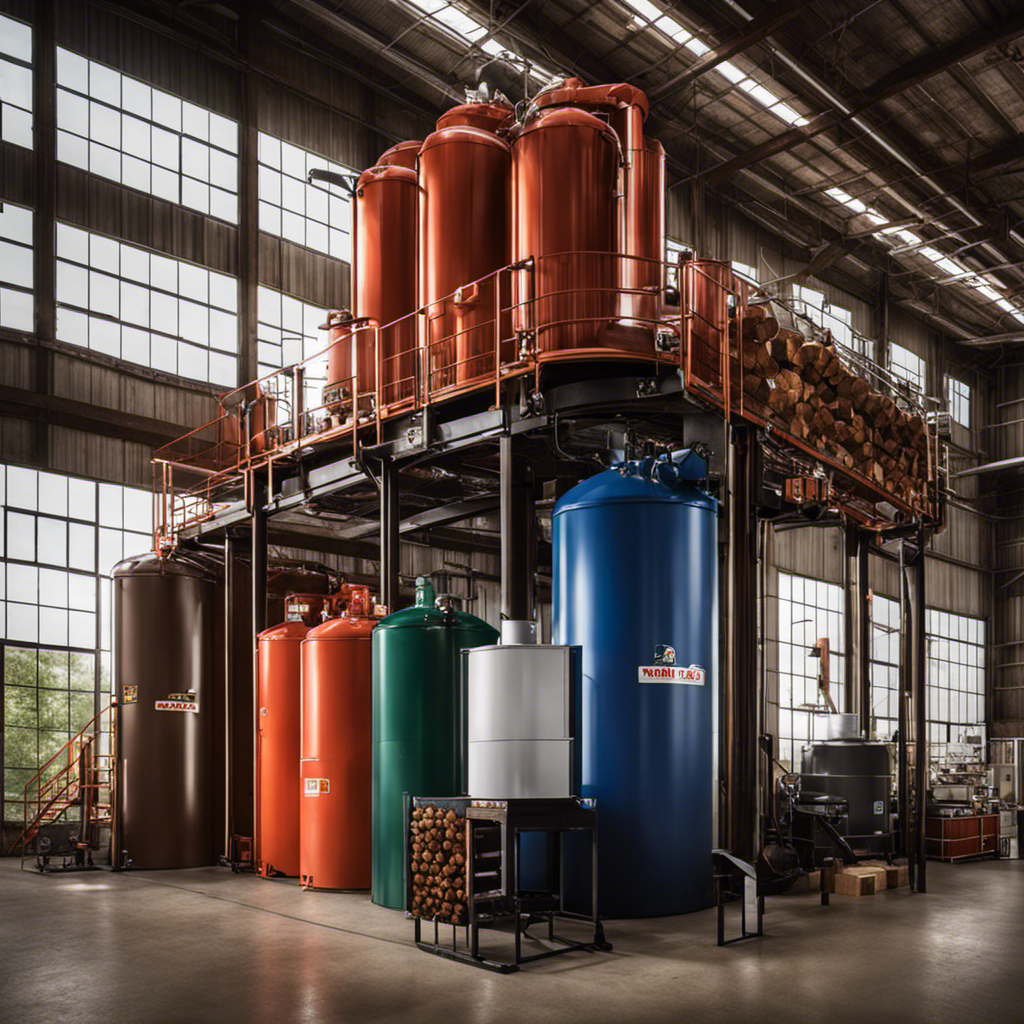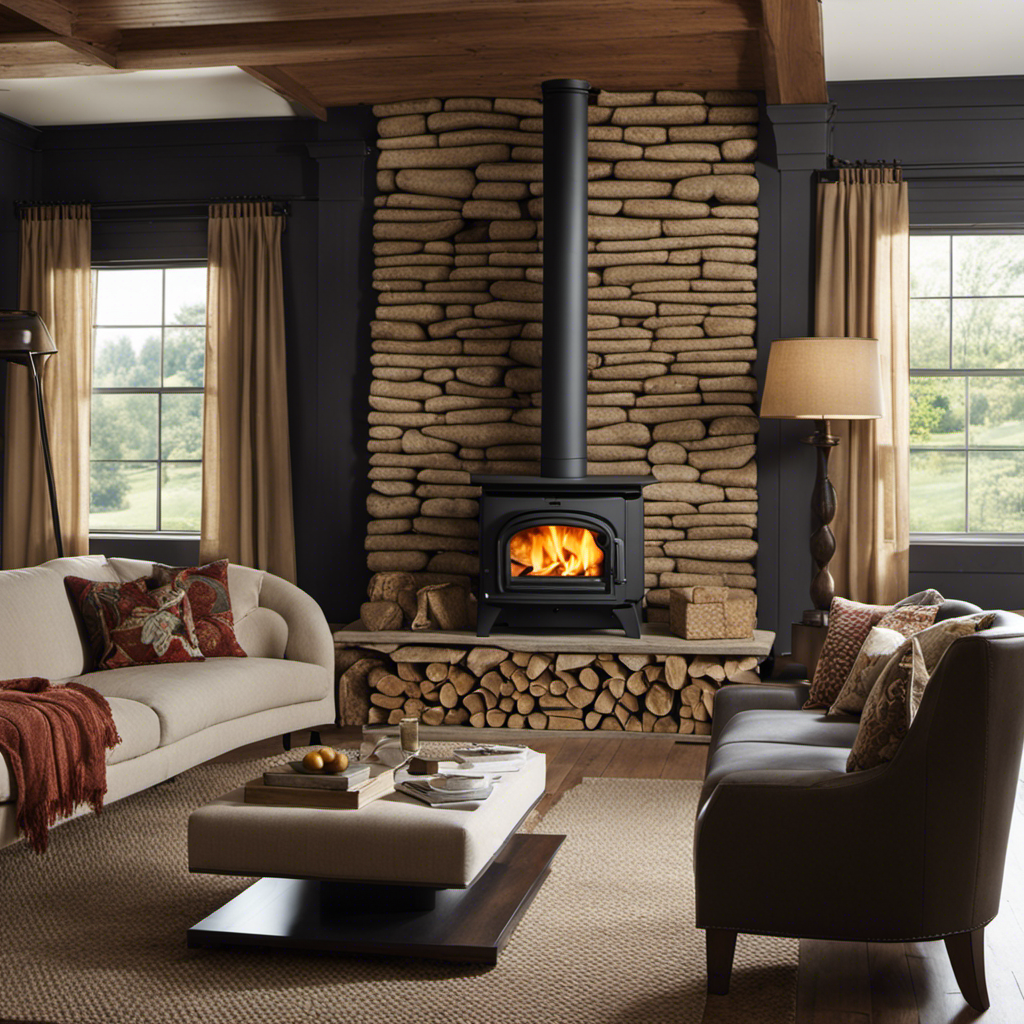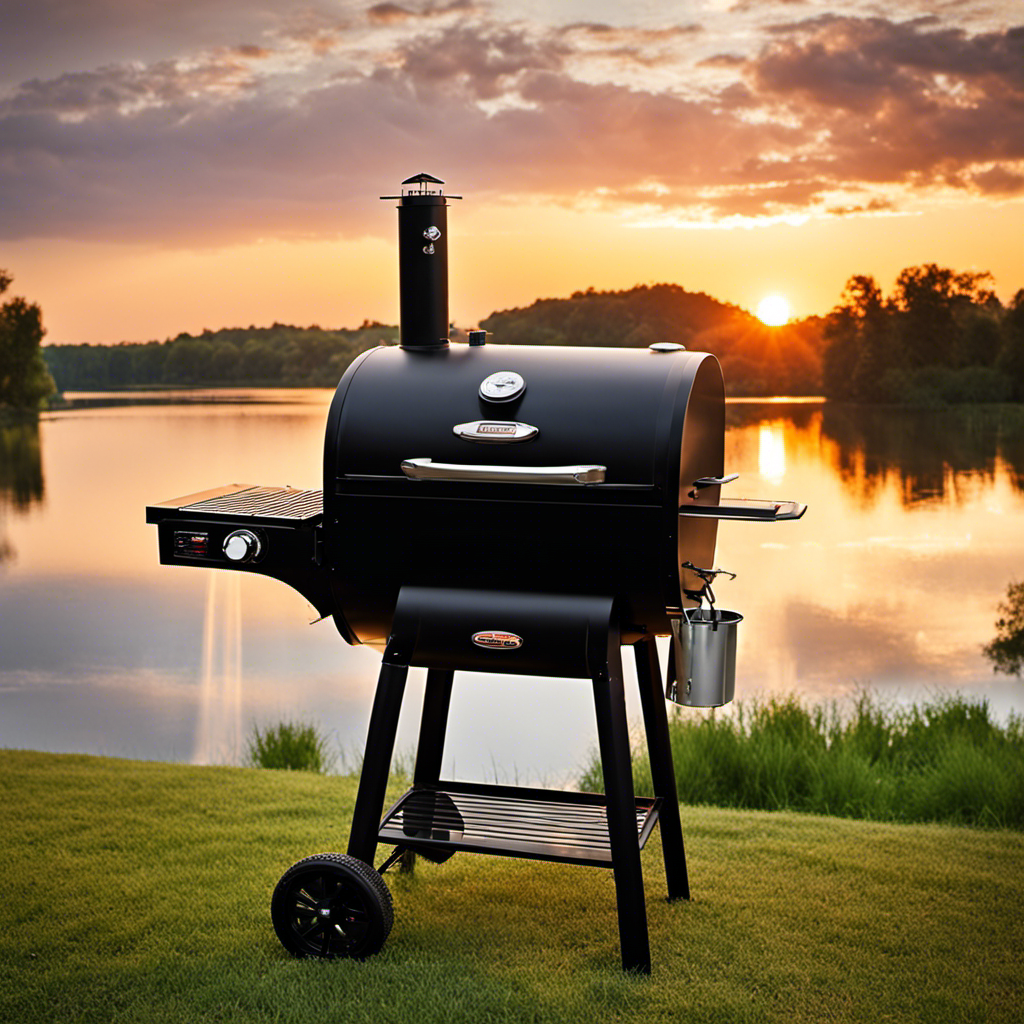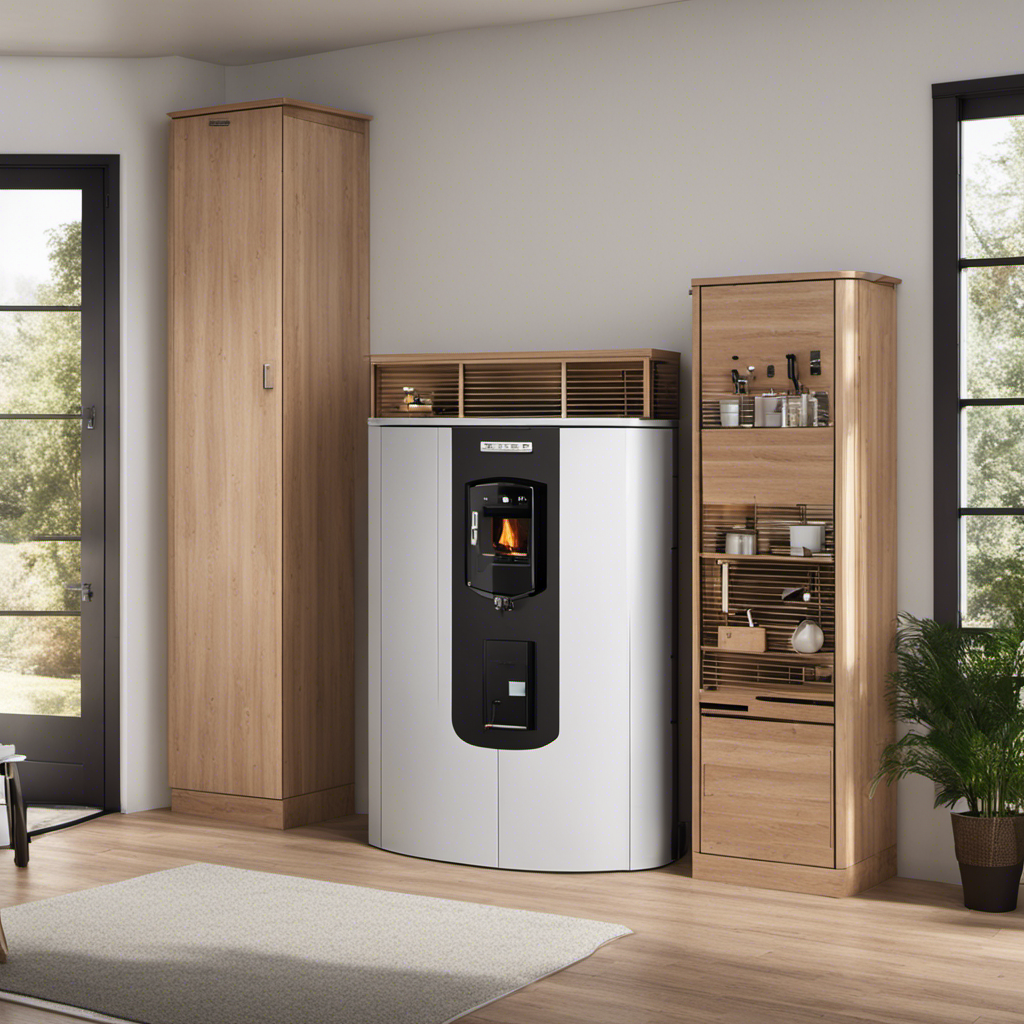To select the right wood pellets, focus on high-quality options with low moisture content, consistent size, and a dense composition to guarantee efficient burning and minimal ash. Opt for trusted brands certified by industry standards like PFI or ENplus, and consider the raw material, such as hardwood versus softwood. Proper storage and handling also help maintain pellet quality and reduce emissions. Keep exploring to learn more about choosing pellets that maximize heat and minimize environmental impact.
Key Takeaways
- Select pellets with low moisture content (preferably below 10%) for optimal combustion and reduced emissions.
- Choose reputable brands with industry certifications like PFI or ENplus to ensure consistent quality.
- Opt for hardwood pellets, such as oak or hickory, for denser, longer-lasting fuel with less ash.
- Store pellets in dry, airtight containers to maintain quality and prevent moisture absorption.
- Higher-quality pellets improve stove efficiency, reduce maintenance, and support eco-friendly heating.
What Are Wood Pellets and How Are They Made?
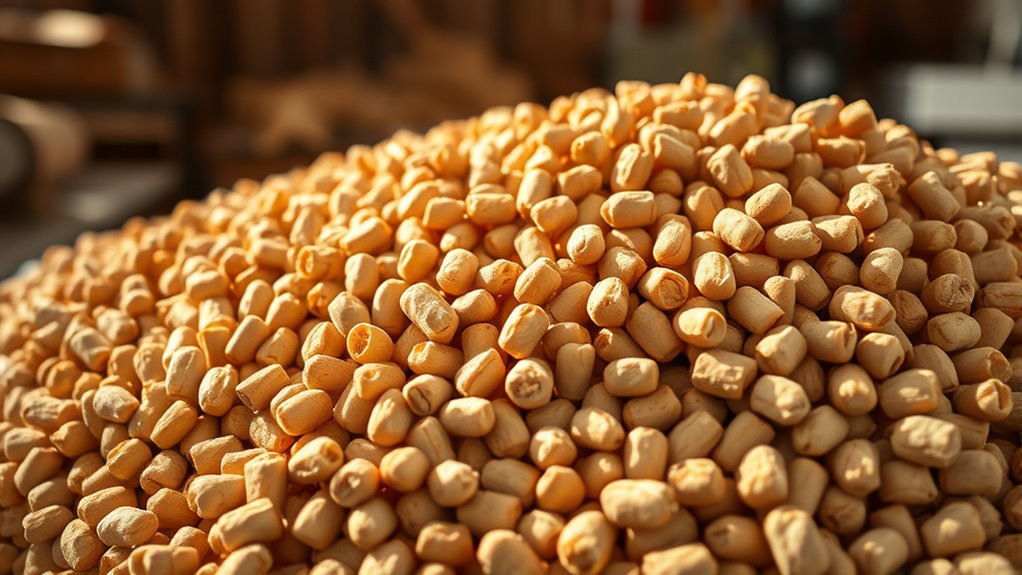
Wood pellets are small, cylindrical pieces made from compressed sawdust and other wood waste. Their biomass composition primarily includes finely ground wood materials, which are carefully selected to guarantee consistent burning. During pellet manufacturing, these raw materials are dried to ideal moisture levels, then ground into a uniform powder. This powder is pressed through high-pressure dies, forming dense, compact cylinders. The manufacturing process ensures that moisture content and biomass composition are tightly controlled, which helps produce pellets with reliable energy output. Properly made wood pellets are an eco-friendly, efficient heating fuel, with manufacturing consistency playing a crucial role in their performance. Additionally, the quality of the raw materials influences the pellets’ emissions and overall combustion efficiency. Ensuring consistent production standards can also prevent issues related to power consumption during transportation and storage. Advances in automation in manufacturing further improve pellet quality and uniformity.
The Importance of Pellet Quality for Heating Efficiency
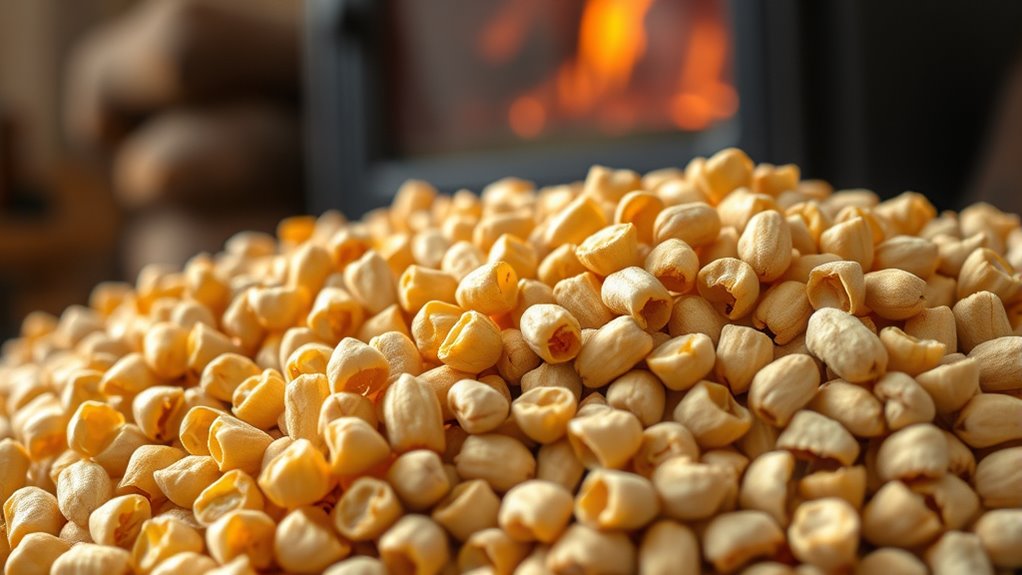
The quality of your pellets directly impacts how efficiently your heating system performs. Poor-quality pellets with high moisture content or inconsistent density reduce combustion efficiency, leading to wasted fuel and higher emissions. Proper pellet storage and moisture control are vital to maintain quality. Store pellets in a dry, covered area to prevent moisture absorption. Consider the following factors:
| Factor | Impact |
|---|---|
| Moisture Content | Higher moisture decreases heat output and increases emissions |
| Storage Conditions | Proper storage prevents mold and degradation |
| Consistency | Uniform density ensures steady heat and cleaner burn |
Neglecting these aspects can cause clogging, uneven heating, and increased fuel consumption, ultimately lowering your system’s efficiency. Additionally, being aware of water park amenities and maintenance can help ensure your equipment remains in top condition. Maintaining optimal pellet quality also supports sound healing science by reducing harmful emissions and promoting cleaner combustion.
Key Characteristics of High-Quality Wood Pellets

High-quality wood pellets share specific characteristics that guarantee ideal performance in your heating system. One key trait is low moisture content, ideally below 10%, which ensures efficient combustion and minimal smoke. High moisture levels can cause incomplete burning and reduce heat output. Pellet density is another vital factor; dense pellets pack tightly, providing consistent energy and efficient burning. Properly dense pellets produce less ash and improve stove performance. Look for pellets that are uniform in size and shape, indicating quality processing. Avoid pellets with excessive fines or dust, as they can clog your equipment. Additionally, proper storage conditions are essential to prevent moisture absorption, which can compromise pellet quality. Proper storage in a dry, well-ventilated space helps preserve pellet integrity and performance. Maintaining optimal storage environment helps preserve pellet integrity and performance. Ensuring that pellets are stored in a dry, well-ventilated space prevents deterioration and maintains their quality over time. Overall, selecting pellets with low moisture content and high density helps maximize heat output, reduce emissions, and prolong your stove’s lifespan. These characteristics are essential for reliable, efficient heating.
How to Identify Reliable Pellet Brands and Sources

To choose reliable wood pellet brands, start by checking their reputation and trust among users. Look for certifications and standards that prove the pellets meet quality and safety benchmarks. Also, consider how transparent the source is and whether the pellets are readily available in your area. Incorporating quality standards ensures you select pellets that are both efficient and environmentally responsible. Additionally, verifying that the pellets meet exhaust emissions standards can help reduce environmental impact and ensure cleaner burning. Understanding the self watering plant pots concept can also guide you in selecting products that are durable and consistent in performance.
Brand Reputation and Trust
When choosing wood pellets, verifying the reputation of the brand is essential to guarantee you’re getting a reliable product. A trusted brand demonstrates consistent quality, high customer satisfaction, and transparent sourcing. To assess a brand’s reputation, consider customer reviews, industry reputation, and years in business. Reliable brands foster customer trust through quality and transparency. Additionally, checking for brand reputation within specific industries like Honda Tuning can provide insights into overall reliability and performance standards. Recognizing the importance of product consistency can help ensure you select pellets that burn efficiently and produce minimal emissions. Paying attention to quality assurance processes can further guarantee the pellets meet safety and environmental standards.
Certification and Standards
Verifying a brand’s certifications and adherence to industry standards can substantially help you identify reliable wood pellet sources. Certification standards, such as those from the Pellet Fuel Institute (PFI) or ENplus, ensure the pellets meet strict quality assurance criteria. These standards confirm that the pellets have consistent moisture content, low ash, and high energy output, which directly impacts heat efficiency and emissions. Reliable brands display certification labels clearly on their packaging, giving you confidence in their product’s reliability. Choosing pellets that meet recognized standards reduces the risk of poor combustion, excessive creosote buildup, or harmful emissions. Additionally, supporting support hours can help you obtain further guidance on selecting quality pellets, ensuring you make an informed decision. Ultimately, prioritizing certification and standards helps you select high-quality pellets that deliver reliable heat, cleaner emissions, and peace of mind in every burn.
Source Transparency and Availability
Knowing where your wood pellets come from is essential for ensuring quality and reliability. A transparent supply chain reveals the origin of ingredients and shows how pellets are processed and distributed. Reliable brands openly share their ingredient sourcing, allowing you to verify that the wood is sustainably harvested and free from additives or contaminants. Availability also matters; consistent access indicates a well-managed supply chain and dependable production. Avoid brands with vague or hidden sourcing information, as this can lead to inconsistent quality and higher emissions. By choosing pellet brands that prioritize source transparency, you can better trust the quality of the product and its environmental impact. Reliable sources ensure you get a consistent, high-quality pellet that heats efficiently and burns cleanly.
The Role of Wood Species and Raw Material in Pellet Quality
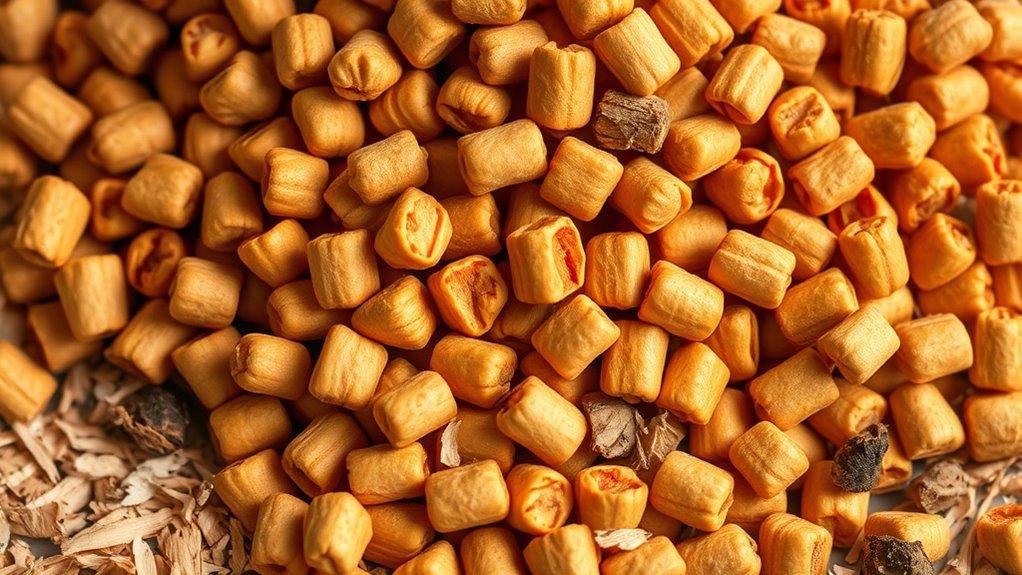
The type of wood and raw materials you choose directly impact the quality of your pellets, affecting their burn efficiency, ash content, and overall performance. Different wood species have unique properties; hardwoods like oak or hickory generally produce denser, longer-lasting pellets with lower ash. Softwoods such as pine or spruce burn faster but may generate more ash and emissions. The raw material’s quality also matters—clean, kiln-dried wood produces superior pellets, while contaminated or damp raw material leads to poor combustion and higher emissions. Selecting the right wood species and high-quality raw material guarantees efficient heat output, less ash buildup, and a cleaner burn. Your choices influence the lifespan of your stove and the consistency of heat, making them critical factors in your pellet selection. Proper raw material quality also ensures minimal creosote buildup and better overall performance. Additionally, understanding the wood species’ characteristics helps optimize pellet performance and emissions.
Impact of Pellet Quality on Stove Performance and Maintenance
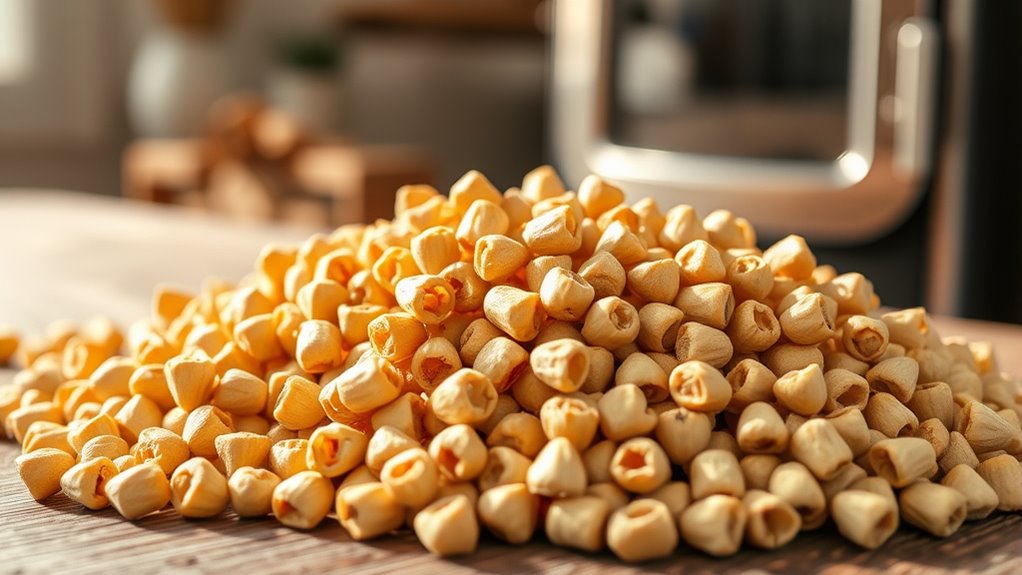
High-quality pellets considerably enhance your stove’s performance by ensuring consistent and efficient burning. When you use good pellets, your stove maintains steady heat output, reducing the risk of clogs and malfunctions. Poor-quality pellets can produce more ash and clinker, which complicate pellet storage and increase the frequency of stove maintenance. Dirty or uneven burning from low-grade pellets can lead to buildup inside your stove, forcing you to clean it more often and potentially damaging components over time. Choosing quality pellets helps prevent these issues, making your stove run smoother and last longer. Proper pellet storage also preserves pellet quality, avoiding moisture absorption that can cause inefficient combustion. Additionally, the type of airless paint sprayer used in painting projects can influence the quality of the finish and the ease of application. Properly stored and high-grade pellets are less likely to absorb moisture, thus maintaining their dryness and consistency, which is crucial for optimal stove performance. Overall, investing in high-quality pellets saves you time, effort, and money on repairs and cleaning.
Emissions and Environmental Benefits of Choosing Quality Pellets
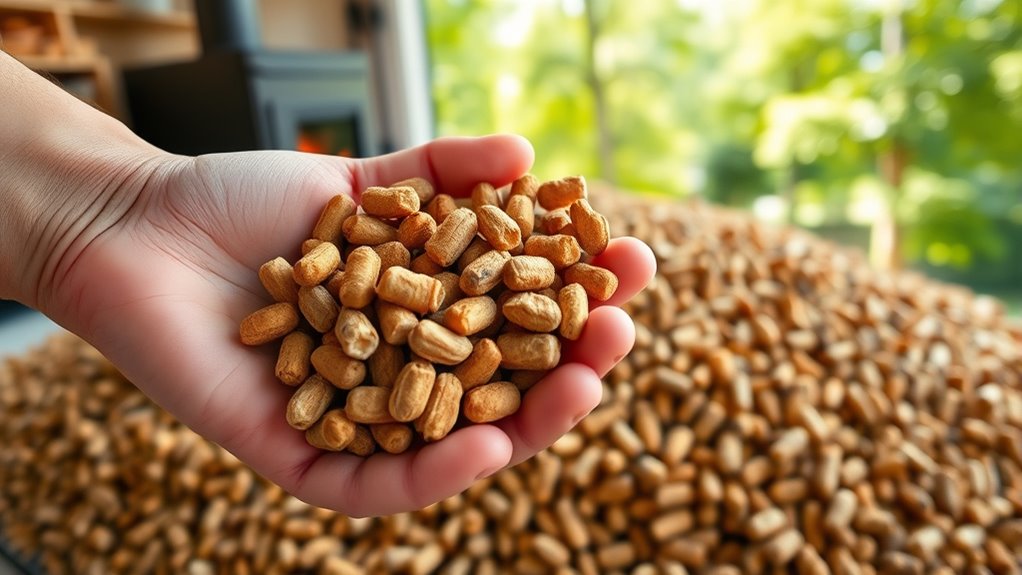
Choosing quality pellets can substantially reduce harmful emissions produced during combustion. When you select high-quality pellets, you minimize the release of pollutants that can affect indoor air quality, making your home safer and healthier. Better pellets burn more efficiently, producing fewer particulate matter and volatile organic compounds. This efficiency not only benefits your indoor environment but also contributes to a more sustainable lifestyle by lowering your carbon footprint. Additionally, quality pellets help lower your carbon footprint by burning cleaner and more completely, reducing greenhouse gases associated with heating. Investing in superior pellets not only improves the efficiency of your stove but also supports regulatory standards aimed at reducing environmental impact. These standards are often based on sound design principles to ensure minimal emissions and optimal performance. By investing in superior pellets, you contribute to a greener environment while maintaining a healthier indoor air environment. Overall, choosing quality pellets is a simple step toward more sustainable heating and a cleaner, safer living space.
Cost Considerations: Balancing Price and Quality
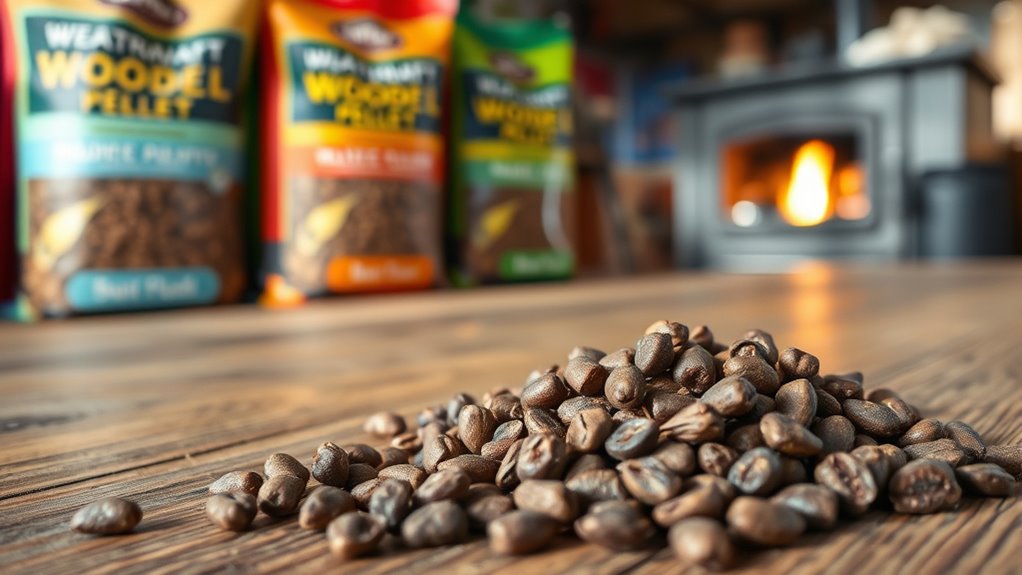
While upfront costs for premium wood pellets may be higher, balancing price and quality requires careful consideration of long-term savings and performance. Your best pricing strategy involves comparing cost per unit and factoring in efficiency; cheaper pellets might save you money initially but could lead to higher fuel consumption or maintenance costs. Bulk purchasing often offers significant savings, as suppliers typically provide discounts for larger orders, reducing overall expenses. Investing in higher-quality pellets can also mean fewer clogs and less cleaning, saving you time and money over the season. Additionally, fuel efficiency plays a critical role in the overall cost-effectiveness of your heating system. Implementing quality assurance practices ensures you select consistent, reliable pellets that meet industry standards, ultimately maximizing your investment. Remember, the cheapest option isn’t always the most cost-effective. By weighing initial costs against durability, efficiency, and long-term performance, you can make smarter choices that benefit your heating system and your budget. Efficiency and proper handling are crucial for maximizing the benefits of your pellet choice.
Tips for Proper Storage and Handling of Wood Pellets
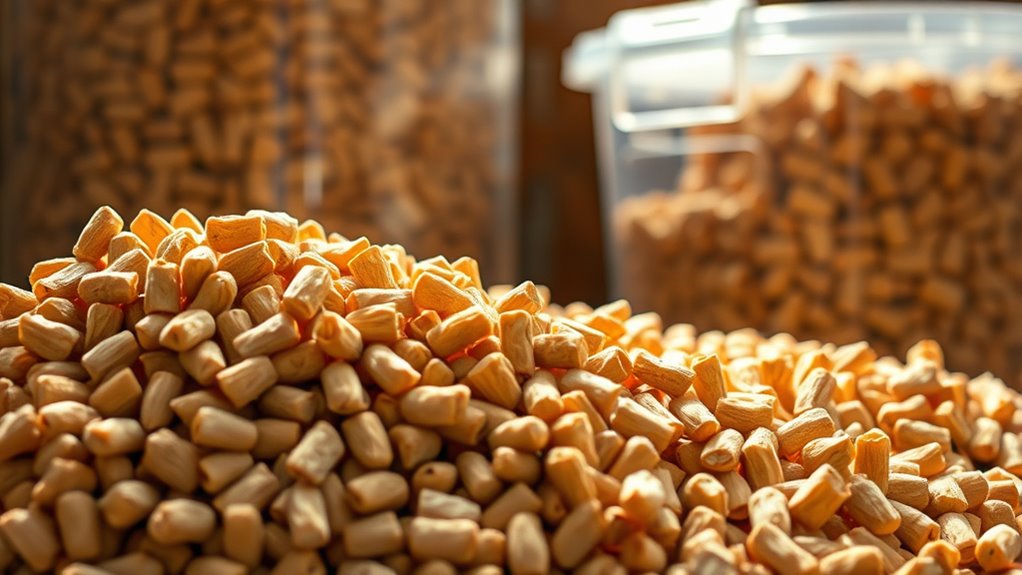
Proper storage and handling of wood pellets is key to maintaining their quality and maximizing your investment. To prevent moisture damage, always focus on moisture control by keeping pellets dry. Use airtight storage containers or sealed bins to shield them from humidity and rain. Store your pellets in a cool, dry place away from direct sunlight and sources of heat. Avoid stacking pellets directly on the ground—use pallets or shelves to promote airflow and prevent mold. When handling, use clean, dry hands or tools to avoid introducing moisture. Regularly check your storage area for signs of dampness or mold, and address issues promptly. Proper storage not only preserves pellet quality but also ensures cleaner burning and better heat output.
Frequently Asked Questions
How Do Different Wood Pellet Grades Affect Heating Performance?
Different wood pellet grades considerably impact your heating performance. Higher-grade pellets meet strict grading standards, ensuring consistent pellet density and fewer impurities. This consistency means you get more heat and less ash, making your stove operate efficiently. Lower-grade pellets may have irregular density and more contaminants, causing uneven burning and higher emissions. So, always choose pellets that adhere to grading standards for ideal heat output and cleaner emissions.
Can Low-Quality Pellets Damage My Pellet Stove?
Using low-quality pellets can damage your stove over time. Poor pellets produce more ash and clinker, which can clog vents and harm components. To prevent this, store pellets properly in a dry, cool place and perform regular stove maintenance. This helps your stove run efficiently and reduces the risk of damage. Investing in high-quality pellets guarantees better heat output and minimizes maintenance needs, protecting your stove long-term.
Are There Certifications to Look for in High-Quality Pellets?
When selecting high-quality pellets, look for certification standards and quality labels like the Pellet Fuel Institute (PFI) certification or ENplus. These labels guarantee the pellets meet strict performance and emissions criteria, helping you get consistent heat and protect your stove. By choosing pellets with these certifications, you’re assured of better combustion, less ash, and a more efficient, cleaner-burning experience.
How Does Pellet Moisture Content Influence Emissions?
Think of your pellet stove like a car engine; moisture content is the fuel’s quality. When pellets have high moisture, they produce more smoke and emissions because extra energy is used to evaporate that water. Proper moisture control is vital for emission reduction, making your stove run cleaner and more efficiently. Low-moisture pellets burn hotter and cleaner, helping you enjoy a more eco-friendly and cost-effective heating experience.
What Are the Environmental Impacts of Using Inferior Pellets?
Using inferior pellets increases air pollution because they burn less efficiently and produce more smoke and particulate matter. This impacts your environment by contributing to poor air quality and health issues. Additionally, cheap, low-quality pellets often come from unsustainable forest practices, harming forest sustainability. You risk supporting deforestation and habitat loss. So, choosing high-quality pellets helps reduce emissions, protects forests, and promotes a healthier environment for everyone.
Conclusion
Choosing high-quality wood pellets is like planting seeds for warmth and sustainability. When you pick the right pellets, you guarantee your stove runs smoothly, emissions stay low, and your wallet appreciates the savings. Remember, quality isn’t just a label—it’s the foundation of efficient heating and a healthier planet. So, don’t settle for less; your cozy home and the environment deserve the very best. After all, isn’t warmth worth the extra care?




